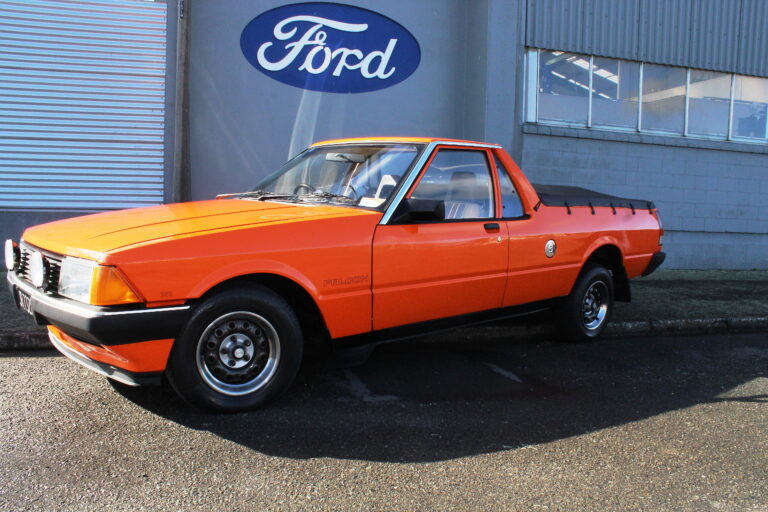Let’s just establish this up front: putting a pair of turbos on top of a 5.0-litre V10 engine is ridiculous. It’s absurd and excessive, and a sure-fire way to send yourself to prison or the afterlife. But it’s also inspired and brilliant, and makes for one of the quickest cars on the road.

Some time ago, Audi decided that they would essentially steal the power plant from stablemate Lamborghini’s Gallardo LP560, add a couple of turbochargers, and dropped it into a large family car — bananas. Can you imagine if someone had suggested this lunacy with the engine from a Countach or a Diablo? You’d be laden with skis, kids, mulled wine, and amazing shoulder pads, make it halfway up Mount Ruapehu, and burst into flames. But since Lamborghini is now in the hands of the focused minds behind the VW Golf, there is a chance that the motors being used are capable of more than several trips up Auckland’s Parnell Rise at full throttle before blowing up.

The car they chose to inject this fury into was the C6 RS6, released in 2008 as a follow-up to the barnstorming introduction of the RS6, which had a double-blower set-up itself, albeit on a somewhat paltry-in-comparison 4.2-litre V8. When it was released, the RS6 cost a mere thousand dollars over a quarter of a million. At the time, we are led to believe that you could’ve instead purchased several Ponsonby villas. The RS6 entered a small segment of the market where, in all likelihood, that kind of money wasn’t necessarily going to put off potential buyers. Even as world economies collapsed, the RS6 quickly found favour with the properly wealthy and some bankers. Offered as a sedan and in wagon form, the RS6 ticked a lot of boxes for a lot of people.

As the RS6 was being released to the market, Audi revealed the newest iteration of their supercar, the R8. This was powered by a 5.2-litre V10 ‘borrowed’ from the RS6’s little brother, the S6, and retuned. The problem was that the V10 R8 was retuned to produce a mere 391kW and 530ft·lb of torque. The already-on-the-shelf RS6 was putting out a whopping 426kW and 650ft·lb, making it the most powerful vehicle Audi had ever produced.

Potential customers of these two cars, for whom numbers are everything, began to wonder if the R8 was no longer considered the flagship model with the RS6 taking the mantle. With 100kmh from a standstill admittedly flashing up quicker in the R8, in a new world where ostentation was suddenly a bit passé, the RS6 appeared at the right time for many wanting to keep a slightly lower profile than riding around in the same drop-top Audi that ‘Iron Man’ drove.

Based on the A6 platform, the RS6 is a big car — a mere 70mm shorter wheelbase than a Holden Commodore VE Sportwagon — and this does impact on performance somewhat. Not in speed — oh no, we’ll get to the speed — but in the way it feels on the road, and the amount of electrical black magic they’ve installed to try and make it feel like a small, sporty car. At low speed, the steering feels slightly manipulated by electrical systems, which are important to get this two tonne-plus behemoth around on the enormous 275-section tyres on all four corners.

Around town, the RS6 can be cumbersome in small car parks and skinny city streets, where they often found homes in the hands of well-heeled professionals. It has all the creature comforts you might expect for a $250,000 car. The cabin still feels modern and well-appointed with reversing camera and electric tailgate options on the vehicle we drove.

In traffic, the RS6 is comfortable and feels innocuous enough, giving little away in terms of what it is really capable of doing. In comfort mode, the six-speed gearbox feels sedate and civilized making the RS6 a very nice place to be, and I’d suggest reassuring those potential supercar buyers that they made the sensible choice, albeit with a small trade-off for performance. So they’ll think.

On a recent trip down the southern motorway, encountering the standard 20-minute crawl from the CBD to Greenlane, the traffic thinned somewhat, meaning daydreamers happily sat in the right-hand lane obliviously doing 60kmh despite the clearing roads. To combat this, I (not entirely legally) decided I’d zip up the inside lane into a clear spot. Because we’d been sedately travelling along barely using any throttle whatsoever for a reasonable period, I must’ve forgotten what I was driving and switched into the Dynamic driving mode hoping for a slight push in the right direction. Instead, it felt like I’d summoned the devil. The ferocity in which the RS6 puts down its power is something to behold. Suddenly, all German refinement and any concept of smoothness were forgotten, replaced with a brutality reserved for a Richie McCaw–try saver. I won’t mention the speed I suddenly found myself travelling along the motorway at, but let’s just say my next few articles may well have been written about the comfort and performance offered by the Man bus company.

Out of town, the Audi calls the open road home. With the many, many feet of torque on offer, and the tremendously clever Quattro system hard at work, the immediacy that everything happens at is a bit scary at times. A simple dab of throttle at the wrong time can send you several small towns in the wrong direction. Passing is done in the blink of an eye, and cruising at posted speed limits can be … limiting. In the sweeping bends, the RS6 feels planted and reassuringly big. When it gets really tight, the weight of the car can be felt, and, unlike some other big cars, the RS6 doesn’t quite feel like it shrinks around you.

After a few days driving the RS6, its purpose suddenly occurred to me. This was not a car competing with its nearest perceived rivals, the M5 and E63, but one competing with another market altogether. The RS6 was an alternative and, in some cases, a better option than its true competition: the R8, the 911 Turbo, the Gallardo, and the Ferrari F430. The RS6 is simply a supercar with a few extra doors and seats.
This one could be yours too, as it’s currently for sale for a damn good price. Check it out here.
2008 Audi RS6 (C6)
- Engine: 5.0-litre V10 FSI bi-turbo DOHC
- Transmission: Six-speed ZF 6HP26A tiptronic automatic
- Performance: 426kW (579hp), 650ft·lb torque, 1–100kmh in 4.6 seconds


